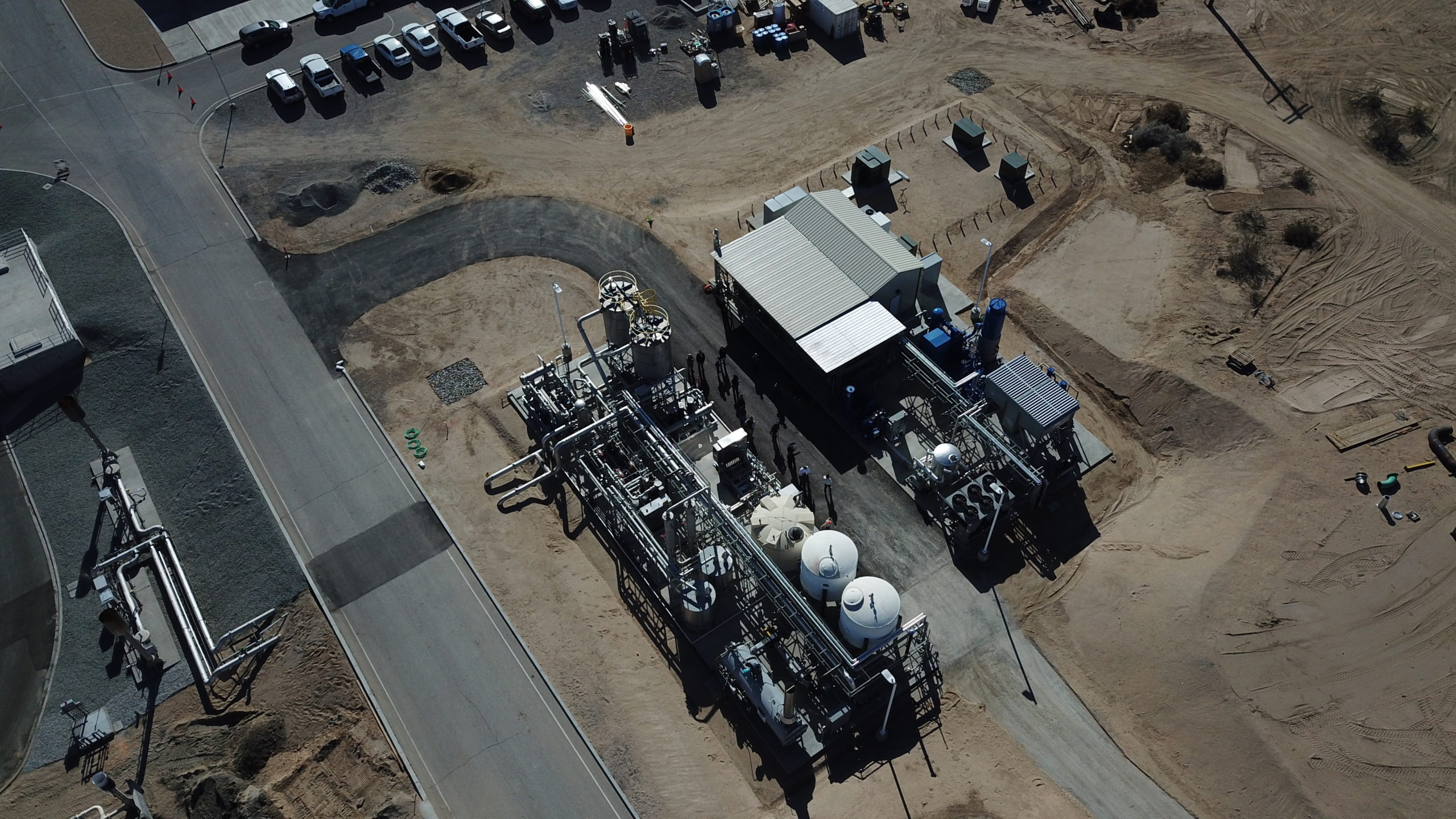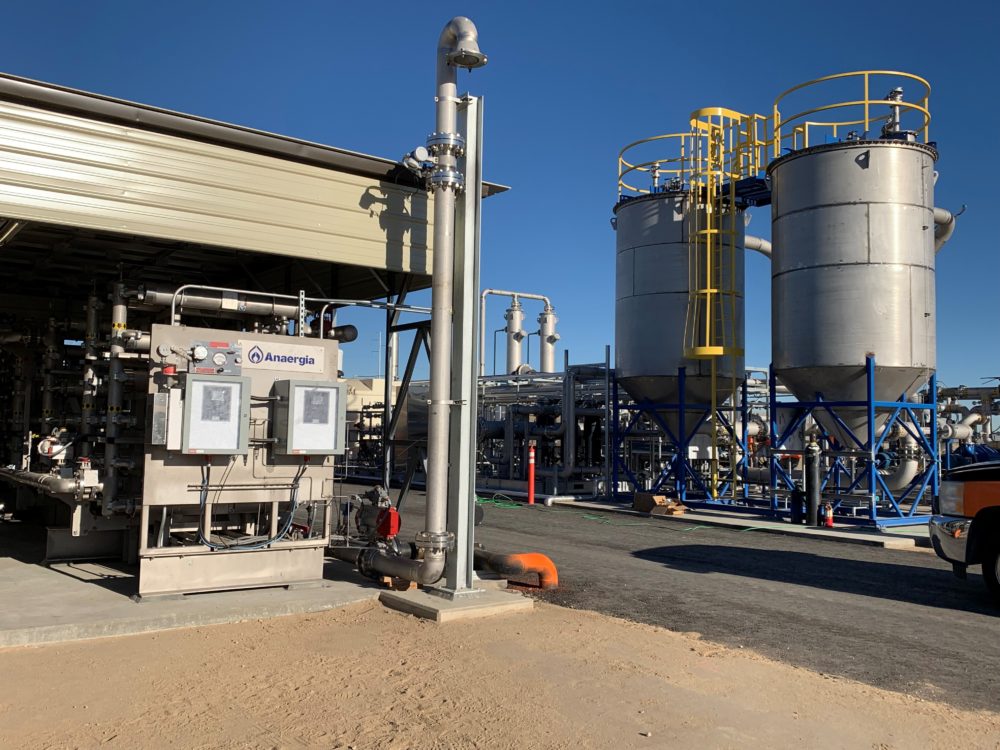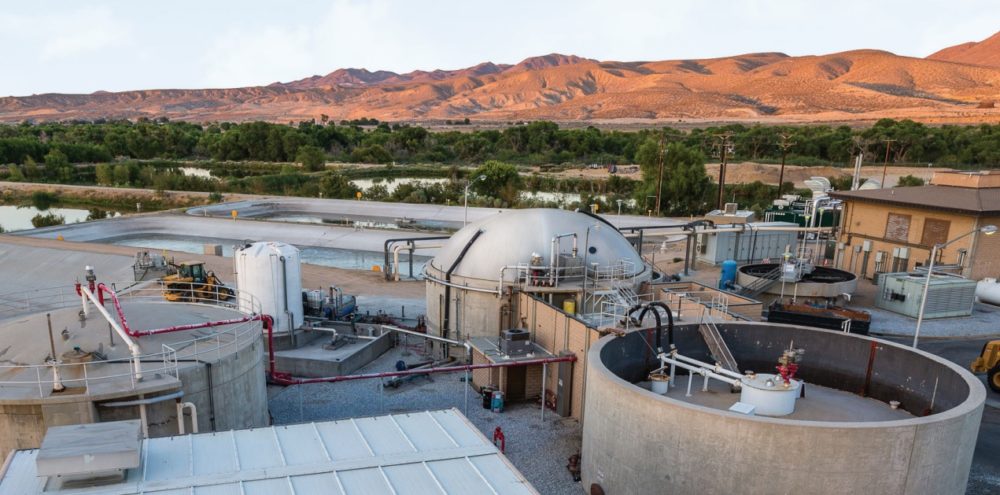
As municipalities across California pass organic waste diversion ordinances required by Senate Bill 1383, the Victor Valley Wastewater Reclamation Authority’s (VVWRA) facility in Victorville recently commissioned a first-of-its-kind resource recovery natural gas facility.
Though the project was conceived before SB 1383 requirements were outlined, this cutting-edge approach demonstrates a progressive way to manage landfill-diverted organic waste under the new regulations and eliminate thousands of tons of climate-changing methane emissions.
The new facility will convert raw biogas made from anaerobically digesting food waste and municipal sewage from VVWRA’s wastewater treatment process to create pipeline-quality renewable natural gas (RNG). The facility is one of the few plants that has gone beyond energy neutrality to become a net energy exporter –the first wastewater facility in California–to export renewable natural gas generated from co-digestion to the utility gas grid.
“This simple idea has many benefits,” said VVWRA General Manager Darron Poulsen. “Now there’s less food waste going to landfill, which means reduced landfill methane emissions. It also means we are able to produce more biogas, so we can send RNG to the gas grid, replacing the fossil fuel with a carbon-negative fuel.”
Once in full production, the facility could divert more than 6,000 metric tons of methane, equivalent to 1.5 million CO2 tons, per year. According to local provider Southwest Gas, the facility will add more than 320,000 MMBTU of RNG to the pipeline each year, enough to offset the emissions of more than 2,000 homes.
“There’s great demand for this carbon-negative fuel, especially for heavy-duty trucks, and that results in far cleaner air for San Bernardino County’s transportation corridors,” said John Hester, Southwest Gas president, and CEO.
California’s Senate Bill 1383 regulations require every municipality to divert residents’ and businesses’ food and other organic waste from landfills, with the goal of reducing the amount of organic waste landfilled by 75% by 2025.

Photos curtesy of VVWRA
“Under Senate Bill 1383, every California municipality must now find a way to reduce food waste and other organic waste going to landfills. Anaergia offers a unique set of technologies that convert existing infrastructure at wastewater treatment plants into highly efficient systems capable of treating both wastewater residual solids as well as food waste,” said Andrew Benedek, Chairman, and CEO of Anaergia. This global company creates renewable energy from waste and partners in the VVWRA facility.
“Our partnership with VVWRA is an example for the entire state on how to solve the current requirements efficiently,” he said.

Photo by Anaergia
Richard Corey, executive director of the California Air Resources Board, the agency tasked with reducing air pollution in the state, sees many benefits with the VVWRA new facility.
“The renewable natural gas being created here will generate a clean carbon-negative transportation fuel significantly contributing to California’s decarbonization strategy while supporting California clean-tech jobs,” Corey said.